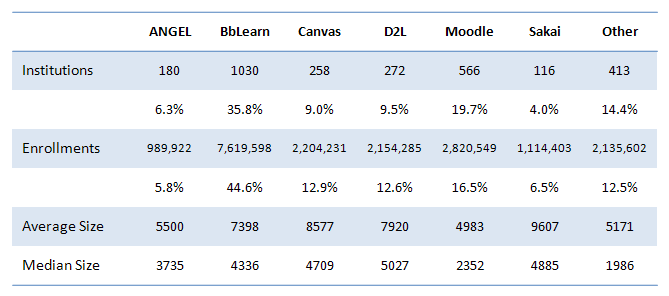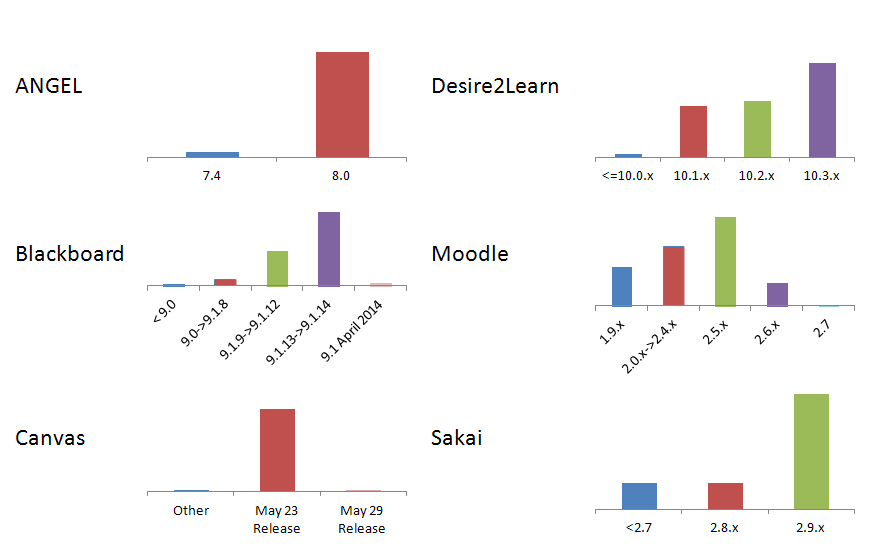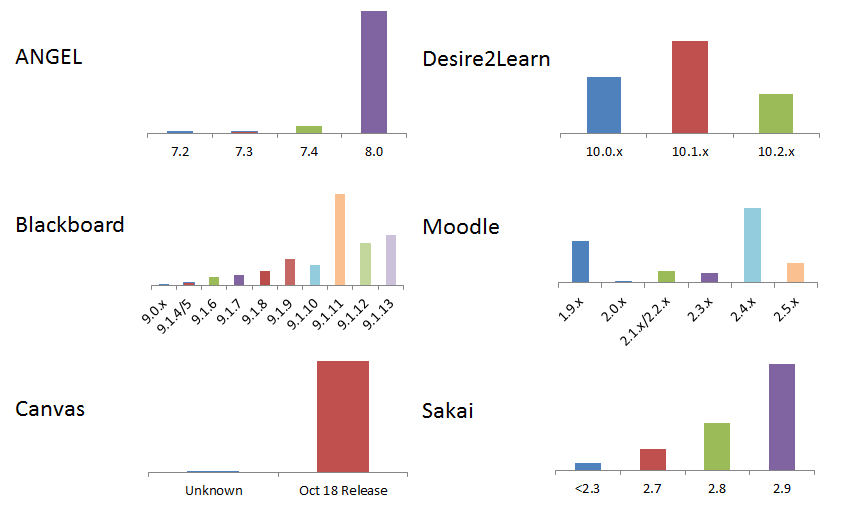Following on to our winter update that included numbers for smaller institutions, here are some updates for the first first several months of 2014:
- Institutions continue to switch among all current LMSs. We detected new and changed institutions for all LMSs except for ANGEL since our last report.
- For all ANGEL clients who have chosen to migrate since our last update, Blackboard has managed to convert between 1/4 and 1/3 of them to Blackboard Learn. Those switching were divided among Canvas, Desire2Learn, Moodle, and Other. Of “Other” LMSs, eRacer and Edvance360 are most popular.
- Canvas has managed to attract several institutions from both the Moodle and Sakai user bases. Previously, switches from these two LMSs were rare.
- Institutions have made efforts to retire legacy LMS systems and shut down previously-used LMSs after a migration is made.
- Pearson’s client base appears to be the most stable with minimal transition (or detected intent to transition) among subscribing institutions.
- Canvas has overtaken Desire2Learn in terms of market share by number of enrollments, while Desire2Learn’s market share in terms of institutions remained steady. Moodle has also lost market share by number of enrollments but like Desire2Learn retains its market share in terms of institutions. Market share for Blackboard Learn and ANGEL have both decreased in terms of institutions and enrollments.
- 1/5 of all Sakai institutions appear to be actively running, piloting, or planning to switch to a different LMS. The most popular LMSs being run in parallel are Blackboard Learn and Canvas.

Institutions have also been making significant progress towards running recent versions of their LMS solutions.
- Two institutions are already running Moodle 2.7 in production even though it was only released 2 weeks ago. More than 20 Blackboard institutions are already running the April 2014 release of Blackboard Learn which was released on April 30th.
- While more institutions than ever are running recent, supported versions of their LMS, Canvas continues its commanding lead in keeping all of its hosted clients consolidated on its most recent version. Moodle appears to be slipping slightly in uptake of its newest versions. Blackboard appears to have made the most progress in upgrading its client base off of its oldest versions.
- Stanford appears to be experimenting with Instructure Canvas in a separate environment than its existing Sakai-based LMS. Perhaps the most interesting find during this round of updates is that Stanford appeared to actually be running a more recent version of Canvas’s open source code than Instructure was running for its hosted clients in production!


